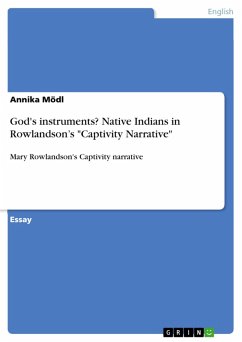Seminar paper from the year 2003 in the subject American Studies - Culture and Applied Geography, grade: 1,5 (A), Technical University of Chemnitz, course: Understanding the USA, language: English, abstract: Considering the US-American society there are two entirely different definitions on how people live together in the States. In the beginning of the settlement people had the vision of forming a new "ethnical group". They saw the American continent as a place where they could live together, not next to each other, a place where it did not matter where they came from and what they were in their "old" life. They thought it to be a place of a new beginning and a very important part of the American dream is expressed in the theory of the melting pot. It says that America is "a place where people from different races, countries, or social classes come to live together to form a new race." (...) Culture and traditions as well as the specification of a people were supposed to melt together to form something new and something better. Nowadays scientist more often use the term salad bowl for the American society. Peter Lösche talks in detail about that second theory in his book "Amerika in Perspektive": Die Vereinigten Staaten bestehen aus Tausenden und Abertausenden Nachbarschaftsinseln, die klar voneinander abgegrenzt und verschieden sind. [...] Auf diesen Nachbarschaftsinseln wohnen Menschen, die die gleiche ethnische oder rassische Herkunft haben; die ungefähr das gleiche wöchentliche oder monatliche Einkommen verdienen; die über etwa das gleiche Sozialprestige verfügen. [...] Dies sind Inseln der Gleichheit und Glückseligkeit, auf denen der amerikanische Traum geträumt werden kann und tatsächlich geträumt wird, deren Bewohner zum Verwechseln ähnliche Werte, Einstellungen und Überzeugungen haben. Wer mehr Geld verdient, sozial aufsteigt und dadurch seine politischen Ansichten verändert, der zieht in eine andere Wohngegend. [...] Innerhalb der Inseln besteht großer Konformitätsdruck, zwischen den Nachbarschaften hingegen ist die größte, farbigste Vielfalt zu beobachten. [...] (Lösche, Amerika in Perspektive, S. 46ff) There is of course a mixing of the different ethnical groups, for example through intermarriages, but only to a certain degree. In most cases it is very simple to tell a Hispanic from a White, a Black from an Asian and an Indian from all the others. In big cities like New York the segmentation can clearly be seen by everybody: there is for instance a Chinatown, a Little Italy, Ghettos full of Black people and outside the cities are reservations full of Indians.
Dieser Download kann aus rechtlichen Gründen nur mit Rechnungsadresse in A, B, BG, CY, CZ, D, DK, EW, E, FIN, F, GR, HR, H, IRL, I, LT, L, LR, M, NL, PL, P, R, S, SLO, SK ausgeliefert werden.









